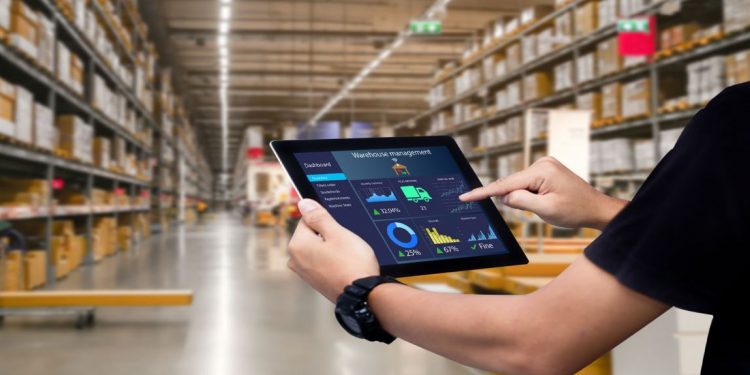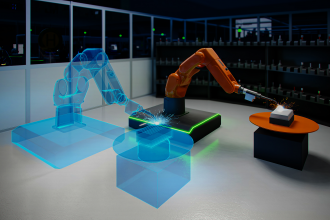Digital Twin for Intralogistics

A new MHI white paper explains how you can use a digital twin with intralogistics.
Today’s logistics are smart logistics—not just the transfer of products, but the transfer of information, as well. The common term for this modern system of logistics is intralogistics, and it includes everything from receiving to storage, packing, labeling, shipping, and everything in between. In order to achieve the most efficient version of intralogistics, you need to apply a host of technology, including the Internet of Things (IoT), sensors, and advanced communications. But first, it pays to understand what you’re getting into—a key method for getting there is to employ digital twins.
A digital twin is a virtual representation of a physical object, system or process. Users apply it to test those items before officially rolling them out. Digital twins for intralogistics can analyze complex scenarios; provide end-to-end warehouse operational results; assess uncertainty and risk; and analyze alternative scenarios to support business decisions before making major investments. The expected benefits of applying digital twin technology in these manners are cost reduction, improved customer service, and increased performance.
A typical digital twin used for intralogistics optimization is made up of two components: a simulation model and an analysis/testing component. The simulation component will utilize information gathered from sensors, the data, and control systems to run a simulation of operations. Data acquisition is the most essential piece of this stage, and can prove the most challenging, although the rapid expansion of IoT has greatly improved the process. Once the information is gathered, the analysis portion of the digital twin process can begin.
During analysis, the digital twin will break the process down into forensic, predictive, alternative, capacity, what-if, and AI development analysis. When building your digital twin, keep in mind what questions you’d like it to answer. This will impact the type, quantity and frequency of the data that is needed. If the analysis is geared around equipment capabilities and limitations, for instance, a physical-based simulator would be the best alternative.
Where are the best opportunities to use digital twins in intralogistics? There are several key areas where a digital twin is a smart move. These include facility design or redesign, operational planning, virtual commissioning, and real-time control. In the future, digital twins for intralogistics may also provide training opportunities for warehouse employees. In this scenario, using augmented reality or virtual reality alongside the digital twin, you can immerse your employees into the virtual environment for a “real feel” training session, with no injury risk or disruption to the daily flow of operations.
Digital twin technology is advancing rapidly, and you can expect it to play a growing role in the advancement of intralogistics going forward. It’s not yet fully mature and more work is needed before it receives widespread adoption, but it’s well worth understanding and keeping it on your radar.
If you’re interested in more details, you can access the full white paper on MHI’s website.
For more information about the Solutions Community: mhi.org/solutions-community
For further articles from the Solutions Community:
The Digitization of Intralogistics: Returns
Past vs. Future: The Difference Between On-Premise and Cloud-Based WMS
Sophisticated Condition Monitoring
Reduce Your Energy Consumption
The Digitization Of Intralogistics: Sortation
Creating A Flexible Order Fulfillment Operation



